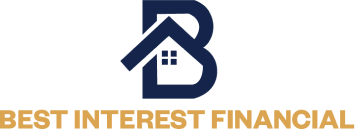When it comes to buying a home, securing the right mortgage is crucial to ensuring long-term financial stability. Two of the most common loan types available to homebuyers are FHA loans and Conventional loans. Each has its own set of benefits and drawbacks, so understanding the differences between the two is essential for choosing the best option for your unique financial situation.
In this blog, we’ll compare FHA loans and Conventional loans, exploring their features, eligibility requirements, and pros and cons to help you decide which is the best fit for you.
What is an FHA Loan?
An FHA loan (Federal Housing Administration loan) is a government-backed mortgage designed to help first-time homebuyers and those with less-than-perfect credit qualify for a mortgage. Because the government insures the loan, lenders are able to offer more lenient terms, such as lower credit score requirements and smaller down payments.
Key Features of FHA Loans:
- Down Payment: As low as 3.5% for borrowers with a credit score of 580 or higher.
- Credit Score: FHA loans are more forgiving of lower credit scores. You can qualify with a credit score as low as 500 if you can make a 10% down payment.
- Mortgage Insurance: FHA loans require both an upfront mortgage insurance premium (MIP) and a monthly MIP. This ensures that the lender is protected in case of default.
- Eligibility: Available to first-time homebuyers and repeat buyers alike, but you must occupy the home as your primary residence.
What is a Conventional Loan?
A Conventional loan is a non-government-backed mortgage that is offered by private lenders such as banks, credit unions, and online lenders. These loans follow guidelines set by Fannie Mae and Freddie Mac, the government-sponsored entities that buy and sell mortgages. Conventional loans generally require a higher credit score and down payment than FHA loans, but they can be more flexible for those who qualify.
Key Features of Conventional Loans:
- Down Payment: Can range from as low as 3% for first-time homebuyers or 5% for repeat buyers.
- Credit Score: Most lenders require a minimum credit score of 620, though higher scores are often needed for better rates.
- Private Mortgage Insurance (PMI): If your down payment is less than 20%, you’ll be required to pay PMI. However, unlike FHA MIP, PMI can be canceled once you reach 20% equity in the home.
- Eligibility: Conventional loans are available to both first-time and repeat buyers, and they can be used for primary residences, second homes, and investment properties.
FHA vs. Conventional Loans: Key Differences
1. Down Payment Requirements
One of the most significant differences between FHA and Conventional loans is the down payment. FHA loans typically require a lower down payment, starting at just 3.5%. This can be an attractive option for first-time buyers who may not have substantial savings. Conventional loans, while they offer options for as little as 3% down, generally require a larger down payment—often 5% or more—especially if you have a lower credit score.
2. Credit Score and Eligibility
FHA loans are more flexible when it comes to credit score. You can qualify with a score as low as 500 with a 10% down payment, whereas Conventional loans usually require a minimum score of 620. If you have a lower credit score or a limited credit history, an FHA loan may be the better choice. However, if you have a higher credit score (680 and above), a Conventional loan could offer better rates and fewer long-term costs.
3. Mortgage Insurance
Both FHA and Conventional loans require some form of mortgage insurance if you make a down payment of less than 20%, but the structure and costs differ.
- FHA Loans: FHA loans have two types of mortgage insurance—an upfront premium that’s rolled into the loan and a monthly premium that’s paid as part of your mortgage payment. The monthly premium lasts for the life of the loan if you put down less than 10%. If you put down 10% or more, you’ll pay monthly insurance for 11 years.
- Conventional Loans: With a Conventional loan, you only pay Private Mortgage Insurance (PMI) if your down payment is less than 20%. However, once you’ve built up 20% equity in your home, you can request to have PMI removed. This can save you money in the long term, whereas FHA insurance lasts for the life of the loan unless you refinance.
4. Loan Limits
FHA loan limits are set by county and vary depending on the area’s housing market. In some areas, the limit for FHA loans may be much lower than Conventional loan limits. If you’re looking to buy a more expensive home, a Conventional loan may offer higher loan limits, giving you more flexibility in your purchase.
Pros and Cons of FHA and Conventional Loans
FHA Loan Pros:
- Lower down payment requirements (3.5%).
- Easier to qualify with a lower credit score (as low as 500).
- More flexible requirements for borrowers with less-than-perfect credit.
FHA Loan Cons:
- Mortgage insurance premiums are required for the life of the loan if your down payment is less than 10%.
- Loan limits may be lower than Conventional loans in some areas.
- May not be suitable for those buying higher-value homes.
Conventional Loan Pros:
- More flexibility in loan terms.
- PMI can be removed once 20% equity is reached.
- Higher loan limits, which makes it suitable for more expensive properties.
Conventional Loan Cons:
- Higher down payment and credit score requirements.
- PMI costs may be higher if your down payment is low.
- Stricter qualifications for first-time buyers.
Which Loan Should You Choose?
Ultimately, the choice between an FHA loan and a Conventional loan depends on your financial situation and homeownership goals.
- Choose an FHA loan if: You’re a first-time homebuyer with a lower credit score or little savings for a down payment. FHA loans are designed to help people with limited financial resources get into their first home.
- Choose a Conventional loan if: You have a higher credit score and can afford a larger down payment. Conventional loans can be more cost-effective in the long run, particularly if you’re able to put down 20% or more.
It’s important to weigh the pros and cons of each loan type and consider speaking with a mortgage professional who can help you understand your options based on your specific needs. No matter which option you choose, the right loan can put you on the path to homeownership and financial stability.

